1. Giant Squid: The Real-Life Sea Monster
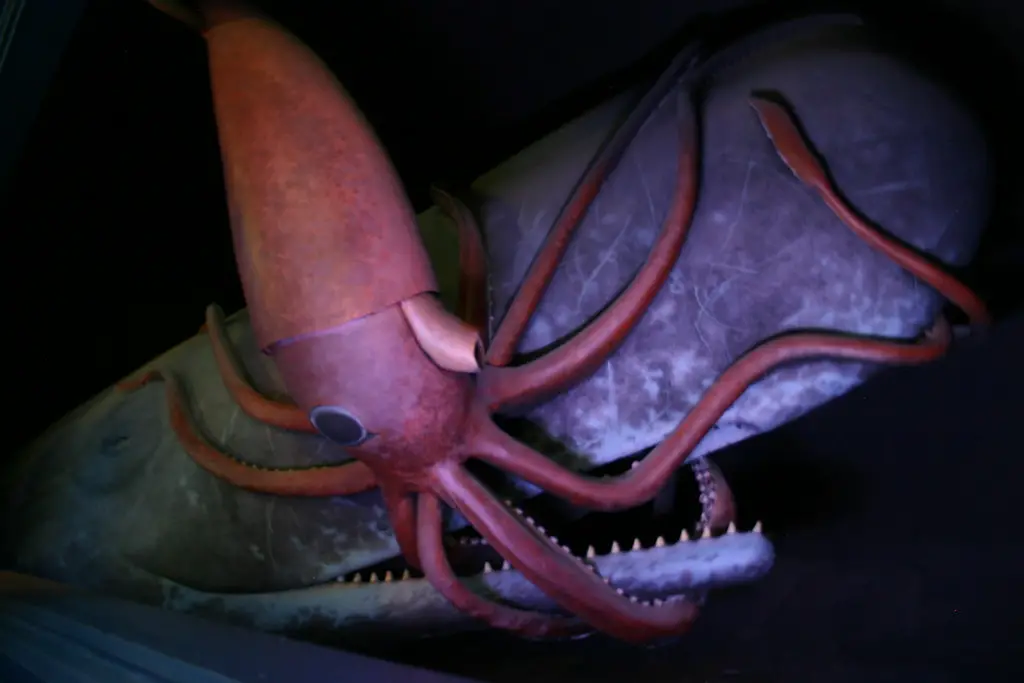
The giant squid (‘Architeuthis dux’) is one of the largest invertebrates on Earth, with specimens reaching up to 43 feet long. Its enormous size, coupled with its sharp beak and long, powerful tentacles, makes it a formidable presence in the ocean. These creatures live in the deep sea, far from human eyes, which adds to their mystique. For centuries, the sight of a giant squid’s tentacle breaking the surface of the water must have seemed otherworldly to sailors. According to Smithsonian Ocean, the squid’s anatomy, including its large eyes—some of the biggest in the animal kingdom—makes it well-suited to the dark depths of the ocean.
Stories of tentacled monsters attacking boats likely stemmed from glimpses of these enormous creatures. While they pose no threat to humans, their mysterious appearances fueled fears of sea monsters. With so few opportunities to observe them alive, early accounts were left to the imagination, further embellishing their size and power. Even today, the giant squid’s existence feels like something out of a fantasy novel, making it easy to see how it inspired the Kraken myth.
2. Early Sightings and Mythmaking
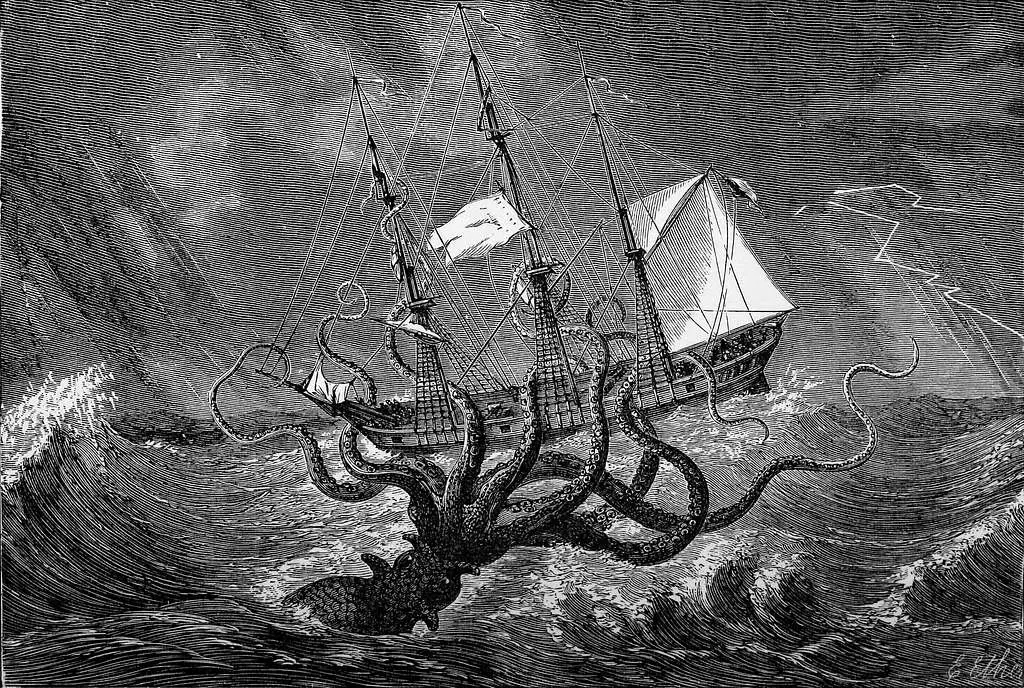
Historical accounts from as early as the 12th century describe enormous tentacled beasts attacking ships and terrifying crews. According to the Natural History Museum, Scandinavian folklore, in particular, is rich with tales of the Kraken, a creature so massive it was often mistaken for an island. Sailors feared its ability to create deadly whirlpools by plunging back into the ocean after surfacing. Such stories spread through word of mouth, and each retelling added layers of drama and terror. These myths likely originated from sightings of giant squids, which were sometimes found washed up on shores. Imagine the shock of encountering a creature with tentacles longer than a ship’s mast—it’s no wonder these encounters were exaggerated.
Early maps even featured sea monsters, reinforcing the idea that uncharted waters were home to giant, dangerous creatures. The Kraken’s association with Scandinavia gave it a cultural identity that persists today, influencing art, literature, and popular culture. In many ways, these tales reflect humanity’s attempt to make sense of the unknown. By linking the giant squid to the Kraken, ancient mariners gave a name to their fears of the deep.
3. The Role of Fear and Imagination

The open ocean has always been a place of danger and uncertainty, and fear has a way of amplifying the unknown. Sailors’ imaginations could run wild when faced with strange phenomena, such as massive tentacles or unusual waves. The giant squid’s immense size and alien-like appearance would have been enough to inspire awe and dread, as discussed by the National Maritime Historical Society. Partial sightings of a tentacle or a large eye might have led sailors to envision a creature far larger than reality. The Kraken became a manifestation of these fears, representing not just a physical threat but the terror of the uncharted sea.
Sailors also relied on storytelling as a way to share knowledge and warn others, which naturally led to embellishments over time. The line between reality and myth blurred as tales were passed down through generations. These stories gave form to the formless, turning the ocean’s mysteries into something tangible. The idea of a creature capable of destroying ships with ease tapped into primal fears of powerlessness against nature. Even today, the Kraken’s legend serves as a reminder of the enduring power of imagination fueled by fear.
4. Scientific Discovery: From Myth to Reality

The existence of the giant squid was long considered a myth until the 19th century, when carcasses began washing ashore. These discoveries provided tangible evidence that giant tentacled creatures were not just figments of sailors’ imaginations. In 1857, Danish naturalist Japetus Steenstrup formally described the giant squid, giving it a scientific name. Even so, it took over a century for scientists to capture images of a living specimen. According to Smithsonian Ocean, in 2004, a Japanese research team succeeded in photographing a giant squid in its natural habitat for the first time. This milestone was groundbreaking, as it brought a creature of legend into the realm of observable science.
Despite these advances, the giant squid remains shrouded in mystery due to its deep-sea habitat. Studying live specimens is incredibly challenging, as they live at depths of up to 3,000 feet. The Kraken myth, once dismissed as pure fantasy, gained renewed attention as the line between legend and reality blurred. Today, the giant squid stands as a testament to how science can validate ancient stories while revealing the truth behind the mystery.
5. What We Know About Giant Squid Today
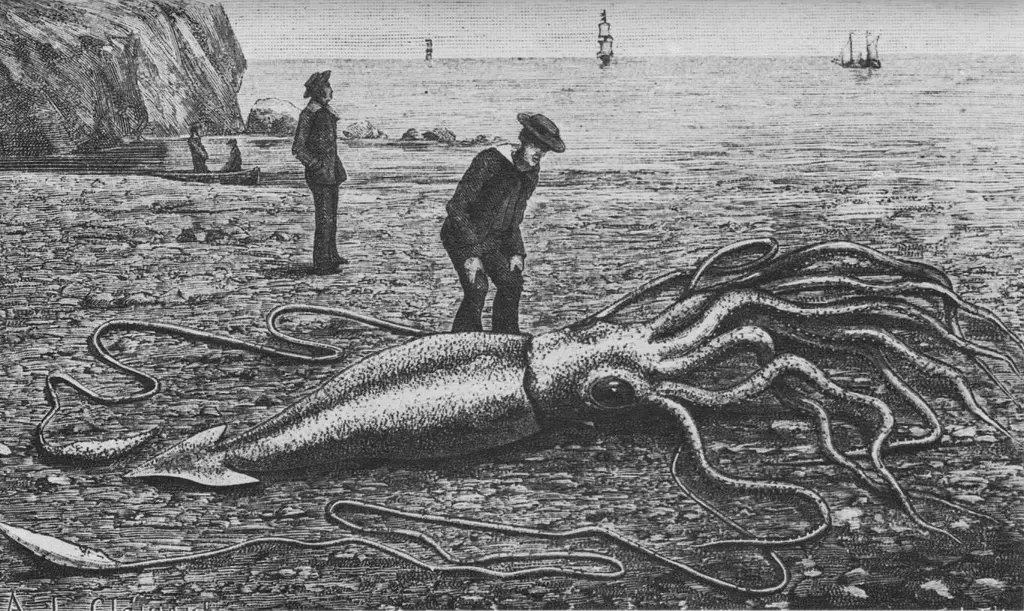
Modern research has uncovered fascinating details about the giant squid, but much remains unknown. These creatures are known to be solitary and elusive, making direct observation rare. Most of what scientists know comes from dead specimens found washed up on beaches or retrieved from the stomachs of sperm whales. According to Smithsonian Ocean, giant squids are believed to have short lifespans, possibly only a few years, which adds to the difficulty of studying them. Their eyes, which can be as large as basketballs, allow them to detect faint light in the deep ocean.
Scientists have also discovered that their tentacles are lined with powerful suckers equipped with sharp teeth. These adaptations make them formidable hunters, capable of capturing prey like fish and smaller squids. However, their role in the ecosystem remains poorly understood due to limited data. The mystery surrounding their behavior and reproduction keeps researchers intrigued. Every new discovery about the giant squid adds to its allure, bridging the gap between myth and reality. Despite technological advancements, these creatures continue to symbolize the enigmatic nature of the deep sea.
6. The Ongoing Mystery of the Deep
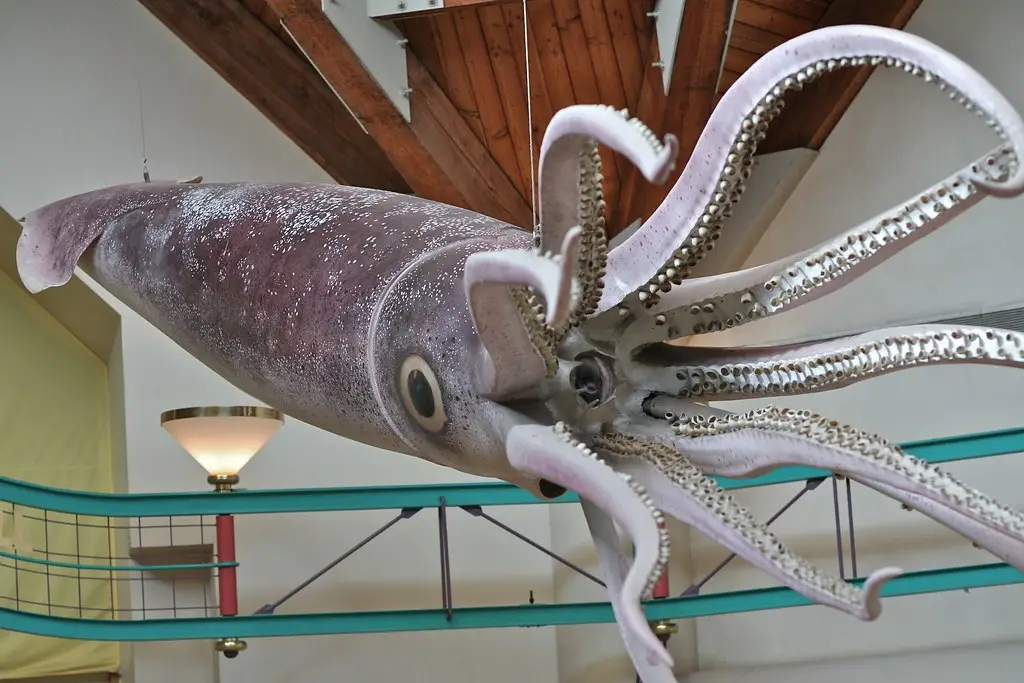
The deep ocean is Earth’s final frontier, with more than 80% of it still unexplored. The giant squid is just one of many creatures that spark curiosity about what lies beneath. Each year, scientists discover new species, some of which challenge our understanding of marine biology. The colossal squid, a relative of the giant squid, adds another layer of intrigue with its even larger size and unique adaptations. Deep-sea exploration technology, such as remotely operated vehicles (ROVs), has brought us closer to understanding this mysterious world. However, the vastness of the ocean means there are likely many undiscovered giants lurking in its depths.
The idea of encountering a creature even larger than the giant squid fuels our imagination. This mystery keeps the Kraken myth alive, as it represents the possibility of undiscovered wonders. The deep ocean’s inaccessibility ensures that it remains a realm of both scientific inquiry and mythic speculation. As we explore further, we may find answers to some questions while uncovering even more mysteries.
7. Why the Kraken Myth Persists
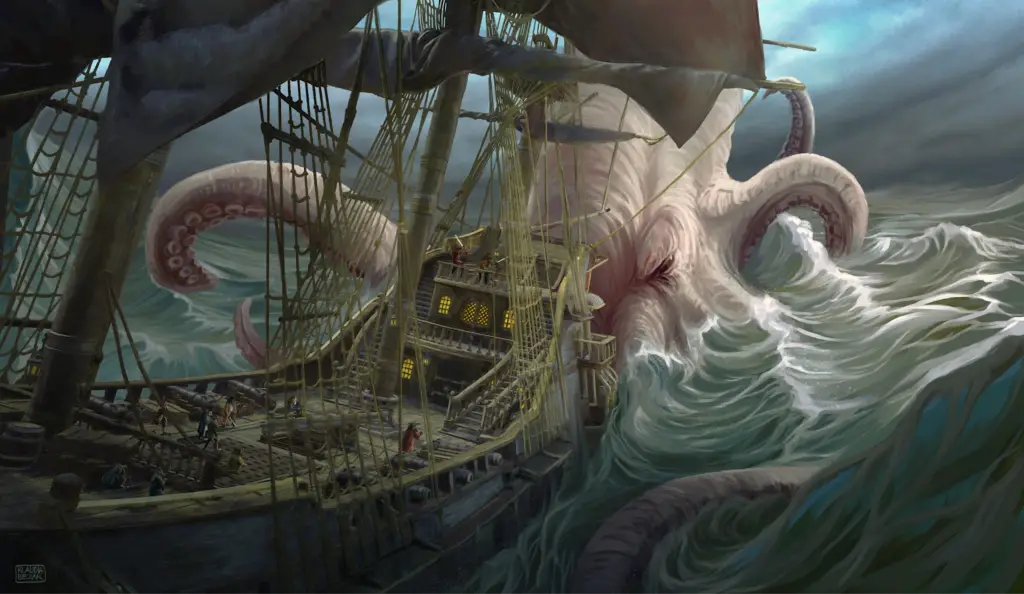
The Kraken’s legend has endured for centuries, evolving alongside our understanding of the ocean. It symbolizes humanity’s fear of the unknown, a concept that resonates deeply even in modern times. The vast, uncharted waters of the deep sea still evoke feelings of wonder and trepidation. Pop culture has played a significant role in keeping the Kraken myth alive, from epic novels like Moby-Dick to blockbuster films like Pirates of the Caribbean. These representations often blend historical accounts with creative embellishments, ensuring the Kraken remains a formidable icon.
The myth persists because it taps into universal themes: our fascination with nature’s power and the thrill of the unknown. With the giant squid serving as a real-world counterpart, the Kraken becomes more than just a legend; it’s a bridge between reality and fantasy. As long as the ocean holds mysteries, the Kraken will continue to capture our imagination. It’s a reminder that the line between myth and science is often as fluid as the sea itself.


